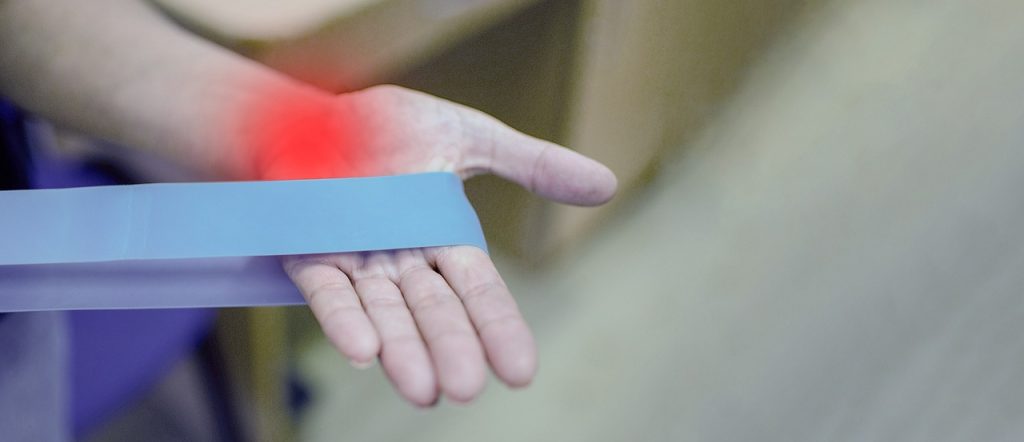Arthritis sufferers offer their best advice on overcoming stiffness and discomfort in the morning and getting a good start to the day.
The adage “you snooze, you lose” is well known. That’s more like “you snooze, you fuse” when you have arthritis. As a result of your joints being motionless at night, they might be particularly painful and stiff when you wake up, according to Orrin Troum, MD, a clinical professor of medicine at the University of Southern California and a rheumatologist at Providence Saint John’s Health Center in Santa Monica.
This implies that for those who have arthritis, the morning is frequently the worst time of day. You have a great deal of work that needs to be completed quickly. Your entire day may be ruined if your joints don’t work together. On a good day, getting out of bed, taking a shower, applying cosmetics and hair, getting dressed, and making breakfast are all parts of the daily routine that healthy individuals take for granted. On a poor day, however, these tasks can feel completely unachievable.
For example, 67 percent of the 1,438 CreakyJoints members surveyed recently stated that their arthritis makes it difficult for them to get dressed.
We asked members of CreakyJoints to tell us about their biggest morning struggles as well as the items and advice they use to make their mornings go more smoothly.
Morning challenge: I wake up so stiff that it’s difficult for me to even move
1. Put on a warm blanket.
 Angela K., 51, swears by a heated blanket to relieve her rheumatoid arthritis symptoms on days when the pain is very intense. She says, “I actually have two, and I kind of put myself in between them like a hot sandwich.” “Before getting out of bed, I turn them on high and just soak in the warmth for about fifteen minutes.”
Angela K., 51, swears by a heated blanket to relieve her rheumatoid arthritis symptoms on days when the pain is very intense. She says, “I actually have two, and I kind of put myself in between them like a hot sandwich.” “Before getting out of bed, I turn them on high and just soak in the warmth for about fifteen minutes.”
“The main purpose of heat therapy for arthritis patients is to reduce pain and increase muscle flexibility,” says Maura Daly Iversen, an associate dean of clinical education, rehabilitation, and innovative initiatives at Northeastern University’s Bouvé College of Health Sciences and a physical therapist. In addition, heat causes the blood vessels in the skin and joints to expand, supplying the muscles and joints with extra oxygen and nutrients. Learn more about treating arthritis pain with heat therapy.
2. Wear compression sleeves while you sleep
Elizabeth P., 35, swears by sleeping in compression gloves for more comfortable mornings. She claims that the gloves prevent her hands from tensing up when she sleeps because her rheumatoid arthritis mostly affects her hands and wrists. “The impact these gloves have on my life is immeasurable,” she exclaims. “They keep my fingers supported and flexible while also reducing pain.” I occasionally wear them during the day as well. Do you require a suggestion? She likes these better because they are less expensive, work well, and come in two pairs, one with fingers and one without so you can continue to type.
3. Extend yourself in bed
Hannah H., 32, states, “I have ankylosing spondylitis literally head to toe—like, even my feet hurt in the mornings.” “In bed, I feel like the Tin Man.” To warm up her joints, she stretches gently as soon as she wakes up, even before she sits up. “My head is where I start, moving my jaw up and down, followed by my neck, shoulders, and lastly, my feet,” she says. Every morning, she spends five to ten minutes stretching, but she claims it’s worth it since it helps her get out of bed.
4. Establish an early medication alarm.
When she’s running around trying to get her kids ready for school, Angela says it takes her morning arthritis pills an hour to start working. She found a way to take her medications as prescribed and still obtain the full benefit of sleep. The night before, Angela places a bottle of water and her medications close to her bed. Then, one hour before she has to wake up, she sets an alarm. She takes her medicine and returns to sleep when the alarm goes off. Her medication has taken effect by the time she wakes up, and she is prepared to go, she claims.

5. Purchase a mattress pad with heat.
Investing in a heated mattress cover is another method to swaddle yourself in warmth. Stephanie M., 24, says, “I sleep with it turned on and it’s been a game changer.” I wake up with a lot less pain and edema thanks to it. I even bring it on vacation since I adore it so much.
6. Have a really hot shower.
Benefit from the two tried-and-true home treatments for arthritic pain—heat and moisture—by taking an extra-warm (not scorching) shower first thing in the morning. “Every morning, I take a 20-minute shower,” psoriatic arthritis sufferer Fred B. states. “I know my wife is annoyed, but this is the only thing that helps when I’m having a severe flare-up of my psoriatic arthritis.”
Morning challenge: It hurts to hold things with my painful hands.
7. Invest in cushioned knife handles
Getting padded grips in various sizes and applying them to anything that has a handle, such as her cosmetic brushes and breakfast utensils, is another morning ritual Elizabeth adores. “These babies are the best; without them, I couldn’t even put on blush or eat cereal.” The Vive grips, available in three sizes, are her recommendation. You can use the interchangeable grips for pens, curling irons, lip or eye liners, and any other object that you find difficult to hold on to. Don’t let your creativity end there.
8. Make use of a rubber grip.
There’s nothing that shouts “bad morning” like a cold smoothie or hot coffee plopped on your lap. Hannah wraps her bottles and cups in a rubberized coozy to help her hold on when her hands hurt so she can protect both her clothes and her meal. There are several variations, but she explains, “I like the ones that have the rubber strips, not the foam because that feels more stable to me.” These rubber cup holders, which transform ordinary tiny mason jars into adorable drink containers, are one amusing alternative.
Morning challenge: I don’t always feel well enough to have breakfast.
9. Obtain some amusing straws
Hannah has a collection of water bottles with straw tops or silly straws she can use in a regular cup to sip her breakfast because even drinking out of a cup might strain her jaw. She says, “My little nieces find it hilarious and always want to use my funny straws with me.” “It also makes mornings more enjoyable.”
10. Sip your morning coffee.
Hannah usually drinks liquid breakfasts in the mornings since her jaw hurts so much. “I can’t chew anything without pain, not even porridge, so skipping breakfast is not an option for me with my medications,” she states. Rather, she has a compilation of easy, healthful smoothie recipes. She prepares the components in fold-top bags that she keeps upright in the freezer, ready to add to the blender. Typically, the contents include frozen fruit, spinach, yogurt, and protein powder. She always has Carnation instant breakfast packets and drinkable yogurts on hand for those mornings when she needs something even faster.

Morning challenge: I hate getting dressed because it hurts.
11. Create a clothing that is arthritic-friendly
“My arthritis has really changed how I look at my clothes. I used to be all about fashion and wearing trendy stuff,” Stephanie explains. Even while she still owns some stylish, fashionable items, she always makes sure to stock her closet with multiple pairs of loose tops, flat, comfy shoes, and slacks with an elastic waist for days when her arthritis makes getting dressed difficult. “There are adorable options out there, I promise! It’s harder to find stuff.” she continues.
12. Purchase a dressing instrument
Using a dressing multitool, such as the Vi&Vi PocketDresser multi-tool, can make it easier for you to wear the clothes you love. “I usually use the hook end to pull up the tiny zippers on my dresses and slacks because it’s impossible for me to grab them with my fingers,” explains Angela. “One is in my purse, and the other is at home.” However, a zipper can be tamed in more than one way. To accomplish the same technique, I always maintain an extra-large safety pin through the zipper pull on my jackets. She continues, “I don’t have to fish around for the tool every time I go in or out because it’s easier to grab.”
13. Rather than using a dresser, use hanging closet organizers
Drawers that have sticky tracks or difficult-to-grab pulls might ruin your outfit before you’ve even begun. However, there’s no law requiring you to keep your clothes in a bureau. Steven, 50, an osteoarthritis sufferer, says, “I bought several of those hanging cloth shelves for my closet and put most of my clothes in those, including socks and underwear.” “I don’t have to bend over to get what I need because everything is at eye level.”
14. Pre-fasten your ties.
Steven has to dress professionally, complete with a tie, on the days he has meetings in the workplace. However, it was just not happening to tie a thin strip of cloth around his neck first thing in the morning. In order to hang his ties on a tie organizer, he asked his wife to loosely knot them around his neck to the proper length. “I just need to put one on and adjust the tightness a bit to be ready to go,” he states.
16. Give your shoes some thought
Putting on dress shoes or lace-up boots requires a lot of bending, twisting, tugging, and tying, which makes shoes particularly difficult for those with arthritis. However, you don’t have to live a life of flip-flops. Stephanie swears by ballet flats since they are comfortable to wear and still maintain a polished appearance. For work, Angela wears athletic shoes, but instead of using traditional laces, she now uses elastic “laces” that don’t tie. Steven dresses in more casually with Velcro boat shoes and a long-handled shoe horn to help him slip into his dress shoes.
Morning challenge: I hate the 16-mile commute. If you can, walk to work.
A pleasant morning stroll is a great method to lubricate and loosen up the joints in your feet and legs, but who has time for that? For Fred, the answer is to incorporate walking into his daily commute. Every day, he says, “I try to walk to work, and usually by the time I get there, my legs and hips feel much better than when I woke up.” “I try to run errands that require walking on the weekends.”
17. Purchase a wheel spinner
“My rheumatoid arthritis is so bad that there are days when I can’t even wrap my fingers around the steering wheel of my car,” Angela adds. “It was terrible driving to work; I had to use my palms to steer, which felt risky.” Then she was shown how to use a steering wheel spinner by a buddy. It’s a big, rounded grip that fits over the steering wheel so you can simply and comfortably turn it without holding on to anything.
Morning challenge: When I’m in pain, it’s difficult for me to get motivated to work.
18. Make use of an upright mouse for computers.
Steven also purchased an upright mouse to increase his efficiency in the mornings at the office. It’s considerably better on my hands because I can hold it with a slack hand and rest my elbow on my desk, he says. “It’s much more convenient and simple to push the buttons.” Neither a tight grip nor fine motor control are necessary to operate this kind of mouse; it can be used without requiring you to rotate your wrist or hand.
19. Use a split keyboard instead of your standard one.
The majority of Steven, 50,’s employment requires using a computer, so he says, “I couldn’t even work for the first hour every morning at work because the osteoarthritis in my hands made it too painful to type.” It really got to me; I began to feel like I wasn’t very good at my job, and I knew that my coworkers were wondering why I was just loitering around the office all morning. It was something I really couldn’t do at work that early, but I didn’t want to acknowledge it. Thankfully, Steven’s supervisor saw him struggling and devised a solution: an ergonomic split keyboard that let him reposition his hands, wrists, and elbows for greater comfort. He claims, “I still feel pain, but it’s much more tolerable now.”
20. Think about altering the schedule
Alanna M.’s inflammatory arthritis made mornings difficult for her no matter what she tried, and it affected how well she performed at work. Because of her frequent tardiness, the 22-year-old was in danger of losing her job, she claims. She was then given the option to work evenings in place of her regular shift. “It’s been great for me to work nights because it allows me to get up and move around more slowly during the day,” she says. “My boss says I’m like a new person, and I’m never late anymore.” If you are unable to change shifts, consider discussing a later start time with your supervisor.

